Assessing the Thomas Fire
California Megadrought
|
NEW ESRI StoryMaps: What's On Our Shelves & NWNL Song Library & No Water No Life ESRI |
California Megadrought
Eric Peterson
Santa Barbara County Fire Chief
Nic Elmquist
Deputy Fire Management Officer, Los Padres N. F.
Congressman Salud Ortiz Carbajal
25th CA District
As a former Santa Barbara resident and NWNL Director, I closely followed the horrors of the Thomas Fire and its consequent debris flow that caused immense damage to homes of friends in Montecito.
I visited 2 months after to face the immense destruction of homes and property. Six months later, I attended this community follow-up discussion on fire prevention and fire-fighting methods. The panel also discussed how fires drain freshwater supplies and can devastate water infrastructure. The Q&A session revealed life-and-death concerns of residents who know they’ll face more fires.
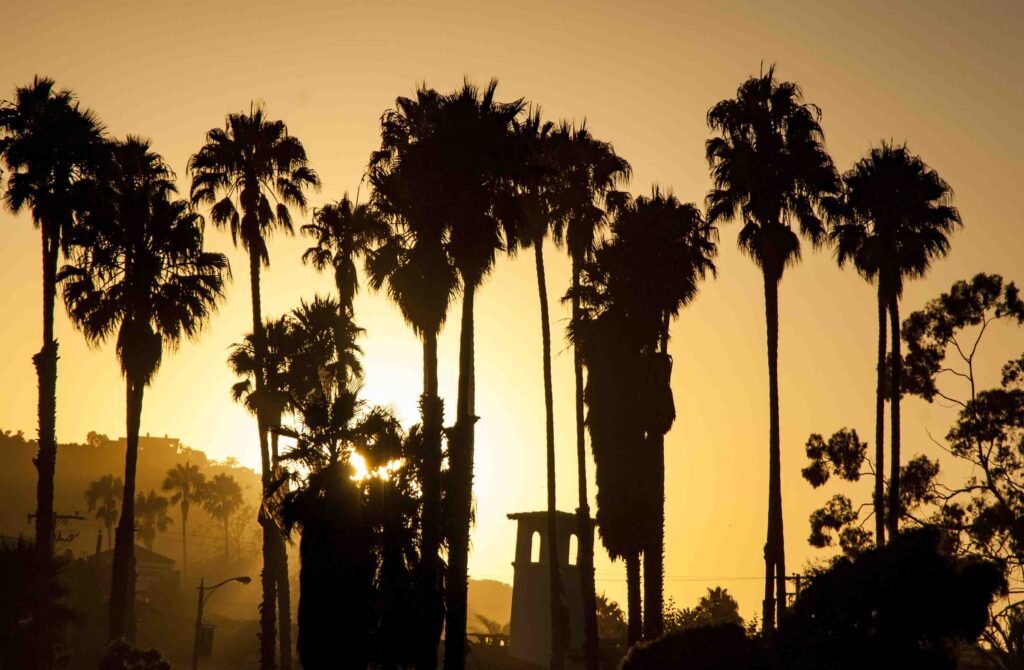
FIGHTING THE THOMAS FIRE
THE THREE COMPONENTS OF WILDFIRES
FUEL BREAK EFFECTIVENES
U.S. FOREST SERVICE as WATERSHED PROTECTION
FUNDS & INFRASTRUCTURE CAN DECREASE FIRES
QUESTIONS and ANSWERS
Key Quote I think the biggest threat to our wildlands – and our water sources – are from wildland fires. — Nic Elmquist, Deputy Fire Management Officer, Los Padres N.F.orest
All images © Alison M Jones. All rights reserved.
ERIC PETERSON As Santa Barbara County Fire Chief, I want to address what seems to be a common misperception: a fuel break is not just a passive tool sitting up on the mountain that makes fires go out. That couldn’t be farther from the truth. I want everybody to understand that. On December 12, 2017, the Thomas Fire worked its way west towards us as a fuel-driven fire sending 280,000 acres of ash, mostly into Santa Barbara.
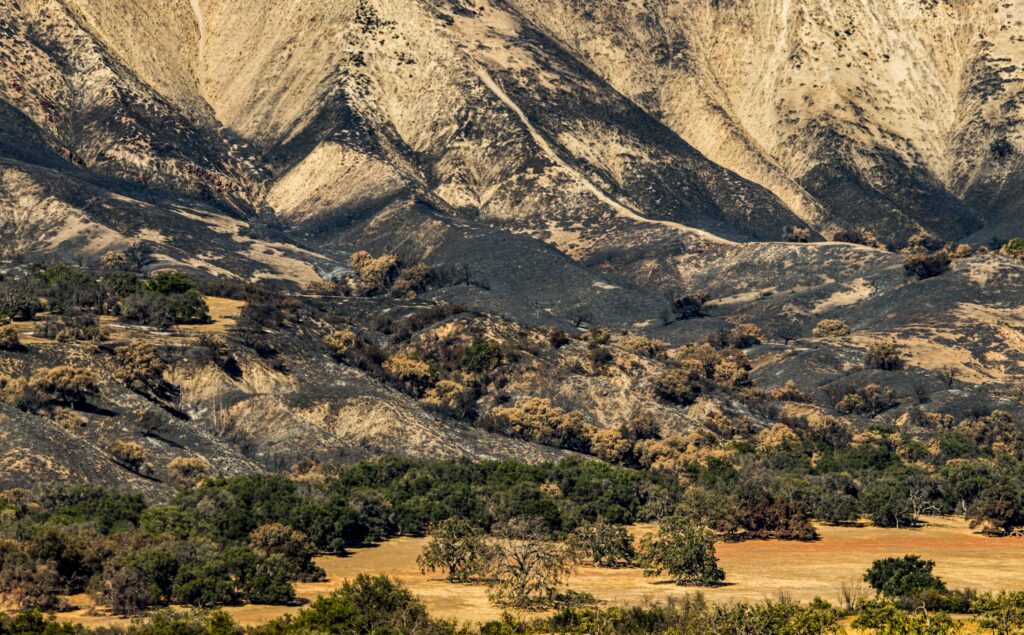
We all worked on The Thomas Fire together. A CALFIRE strike team with hand-crews were up there putting in safety zones for fire crews, with a bulldozer up on the end of a knob of the mountain. A couple of days later, people brought in aircraft to put down fire retardant on the far side of this fire. They fought this thing when the wind was in their favor and the fire was close enough. Then they set a fire to burn into the oncoming flame front of the Thomas Fire to eliminate its fuel. That made the fire go out, which was one of the purposes of a fuel break. After that, they got more equipment and people back where the fires were occurring so we could take proactive, direct action against the fires. Those fuel breaks were not just a strip of hollowed-out land up there that we hoped would do something for us.
A very zoomed-out view shows the massive 40-mile path of the Thomas Fire. It started in Ventura City as a winter fire. Crews from Ventura County and City, Santa Paula, Los Angeles. County, Santa Barbara County and the Forest Service employed heroic efforts. They did a lot of damage, but they mitigated much of their damage. It was a fast-moving fire that spread out over a couple of days and enveloped the community of Ojai. Eventually, this fire became fuel-driven, as opposed to a wind-driven. Given this extremely volatile situation, the fire basically just marched across forest land as radiant heat consuming fuel.
If we then had more fuel breaks in this region, maybe we’d have had more chances to take proactive measures against the Thomas Fire, especially in some of the little bottlenecks. Finally, the Thomas Fire went up to the area where the 2007 Zaca Fire burned over 240,000 acres in the San Rafael Mountains. We held the Thomas Fire there in a cookie-cutter situation up against the border of the Zaca Fire. The fuel break that the Forest Service put in for Zaca held back the Thomas Fire.
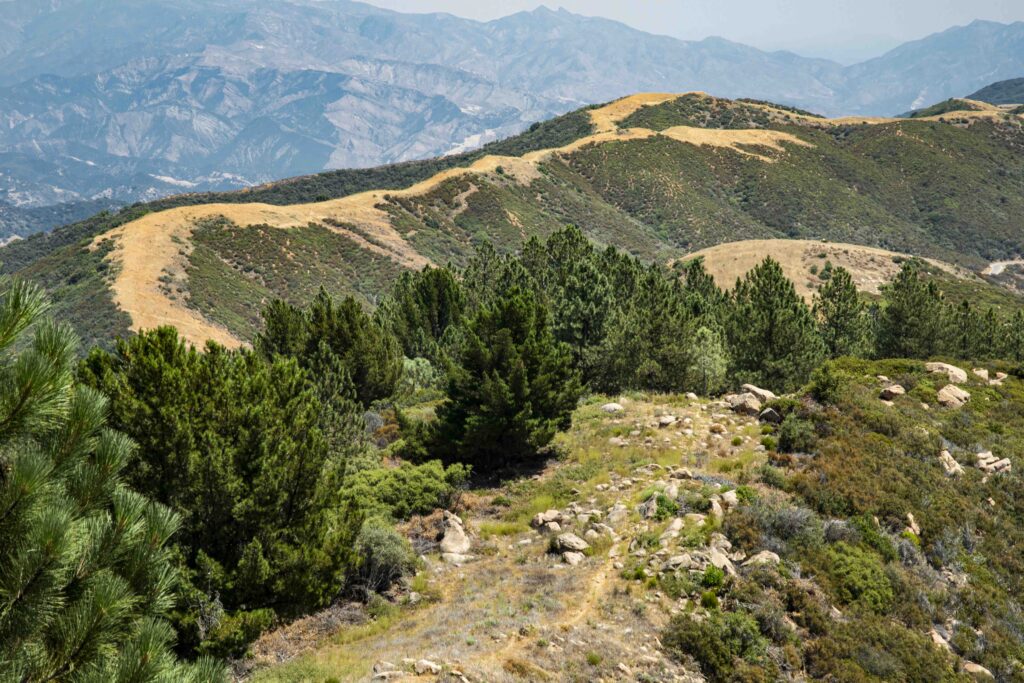
We held the Thomas Fire along the Camino when a finger of the fire came through there, since we had advance notice of a wind event and fortunately had put fuel management and fuel breaks in there, prior to this wind event. Due to that work done by Montecito Fire Department’s hundreds of firefighters and hundreds of firetrucks, when this fire came in we were able to plug in behind Montecito. It was one of the most courageous things I’ve ever seen from a firefighting perspective. Without the amazing work there, we would not have been able to fight that fire.
Very positive and very encouraging things are happening right now. The federal government is releasing more money to support proactive fuel management than ever before – as is CALFIRE, the state government. But it won’t matter if these efforts get held up in court. Environmental Review is extremely important for fuel management; but obstructionist lawsuits holding up our efforts are the last thing we need in this environment. We have very urgent work to do – and we need to get it done.
NIC ELMQUIST Good evening. I’m the Deputy Fire Management Officer for Los Padres National Forest. Normally, my day job is as a fuel specialist and prescribed fire specialist. To explain Chief Peterson’s basics of wildland fire, the 3 components of the fire-behavior triangle are topography, weather and fuel. You know the steep topography of our slopes if you live or hike in our “back country,” or spend time on the “front country” on the Tunnel Trail or Franklin Trail above Carpinteria.
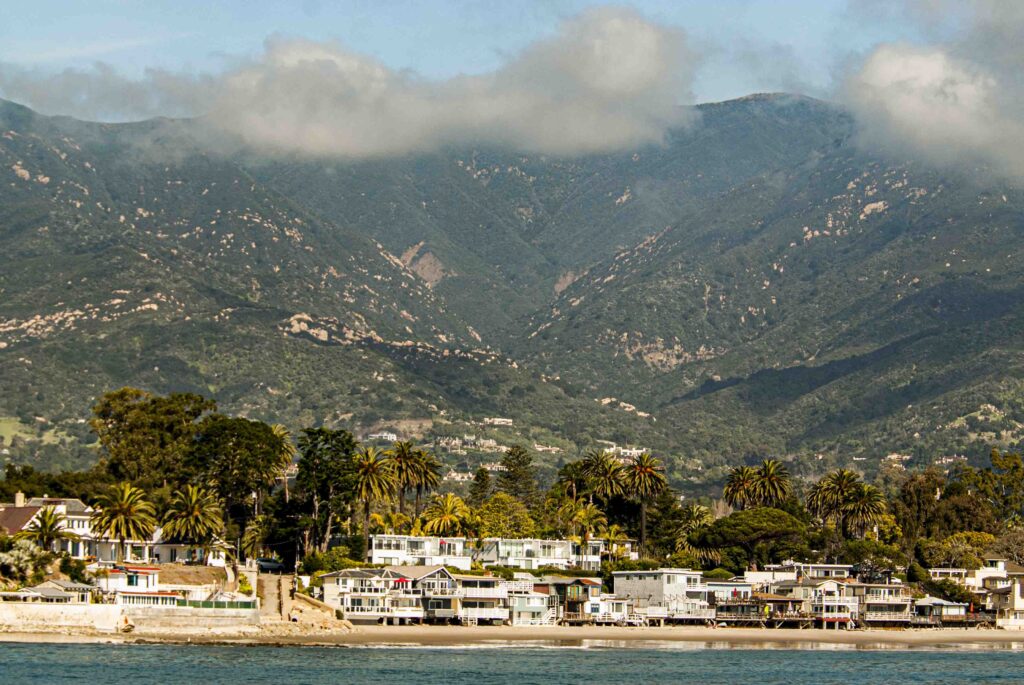
You also know the specific weather that can occur on Santa Barbara’s “front country” during sundowner winds, which we had during the Holiday Fire a few weeks ago. Those winds provoke extreme fire-behavior, critical fire events and probably some of the most extreme fire weather in the U.S. The third leg of the triangle is fuel. This is the only component we can change. To do that, we use our Vegetation Management Program.
Why is a fuel break effective? The only notable scientific paper I know on this subject was released in the 2011 Scientific International Journal of Wildland Fire. It was specific to Los Padres National Forest, where they studied fuel breaks in the forest over a 28-year period. They found 46% of fires interacting with fuel breaks were stopped by those fuel breaks. A 46% success may not be too good if you’re shooting “free throws” – but if you live on the other side of a fuel break, they are pretty good odds.
An important aspect in the Thomas Fire is that fire resources were already placed on those fuel breaks. As alluded to by Chief Peterson, that enabled defensive action from the other side of the road. Fuel breaks for fire suppression along roadsides help evacuate people from their homes and offer firefighters a safe passage to get in to access the fires. They provide an “anchor” for fire resources so we can grab an edge. Quickly putting in handlines and hoses assists our “grabbing the fire” to contain the perimeter.
The 2016 Wildomar Fire in Cleveland National Forest near San Diego is an example of critical use of a road for fuel treatment we buffered 12 years earlier. Imagine living on the other side of the fuel break and needing to get out…. Without fuel treatment along the roadside, you’d have to drive through intense and unsafe conditions. With roadside fuel-fighting tools, fire crews can access and drive into the fire to grab an edge. With those chainsaws and brush hooks, they can start putting in hoses to contain this fire.
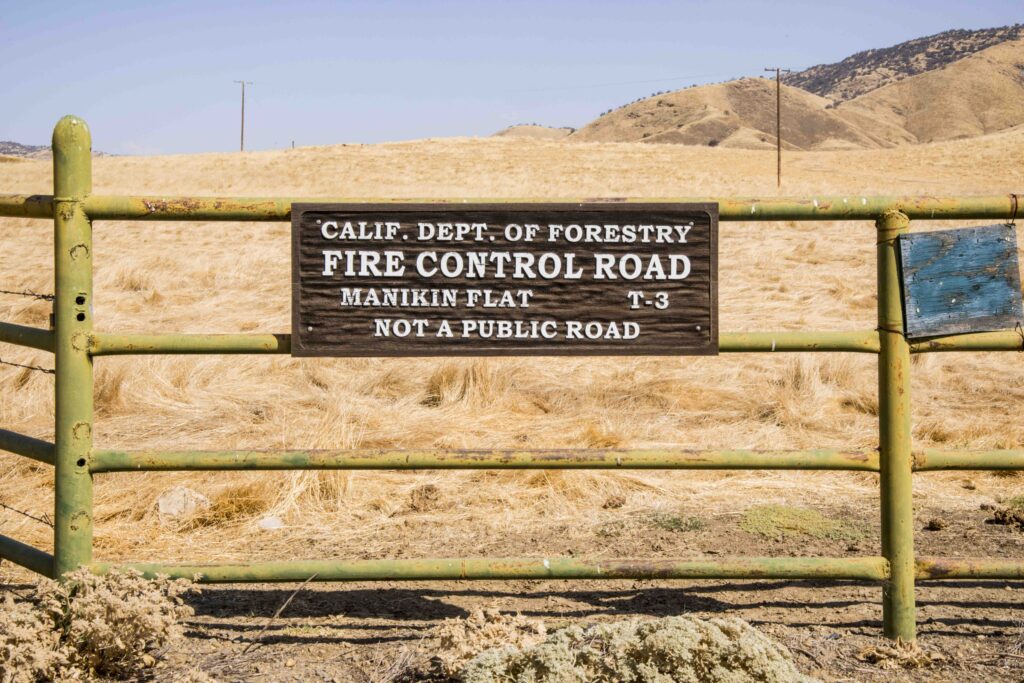
Another great example of reduced fire intensity occurred in 15 to 20-foot chaparral in Los Padres National Forest. Fuel treatments were installed there 12 years prior to that incident. That mature chaparral stand included mostly chemise, scrub oak and manzanita. The area below it had been treated about 5 years earlier, reducing the fire’s fuel loading and thus its intensity.
The mission of the US Forest Service is to sustain the health, diversity and productivity of the nation’s forests and grasslands to meet the needs of present and future generations. We don’t have the National Parks’ recreational mission, although we would like to provide those opportunities. Our staff’s work is to monitor our forests and work with collaborators and partners to think forward about pressures of the future and design projects to mitigate those pressures. I think the biggest threat to our wildlands – and our water sources – are from wildland fires
The US Forest Service was created in the early 1900’s for watershed protection. Our reservoirs feed water to the community directly through “front country” tunnels, so we’re constantly looking at fire opportunities and history, analyzing the landscape, looking at ignition data, trying to gauge when the next fire could occur, and then acting proactively.
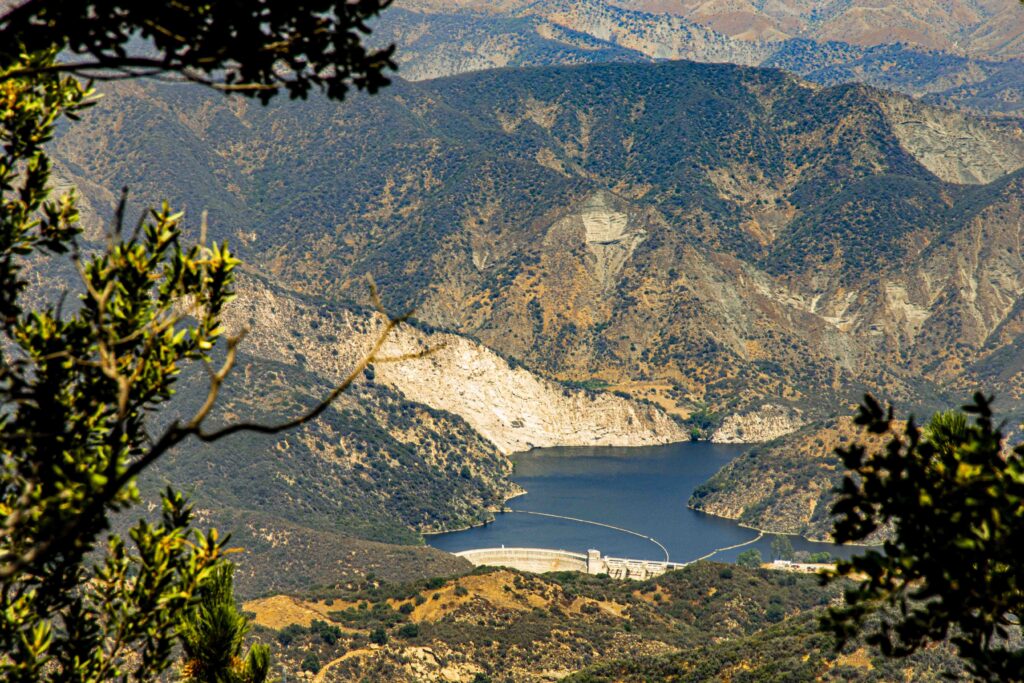
The long-term perspective is that strategic fuel reduction treatments will limit overall landscape resource damage from wildland fire and emergency suppression actions we’re forced to take. Locally, the San Marcos Pass, Eastern Goleta Valley and Community Wildfire Protection Plan is now in draft form. We’ve assessed strategic fuel breaks to prioritize where the next fire might be and determined locations with the most values at risk so we can put our efforts into those specific locations. We’re also addressing the Ojai Defense Zone Project developed with the Fire Safe Council about 15 years ago, plus the Santa Barbara Mountain Community Defense Zone Project done a few years ago.
The main point is that these fires have always occurred – and they’ll occur again. With the steep slopes of properties here, our options are very limited. So, we must be as proactive as we can in terms of our fuel reduction. Inevitably, these areas will be disturbed with bulldozers, so we try to reduce those fuels strategically and avoid risk for our operators. We just lost one firefighter in the Ferguson Fire and another in the Carr Fire. They were both operators trying to open up fuel breaks to contain the fire in an emergency situation.
The lesson is there is much less risk if we address fire suppression beforehand. We also can analyze resource damage to be more deliberate in the terms of actions we take. We could improve our resource-protection component by using fuel reduction techniques. Thank you.
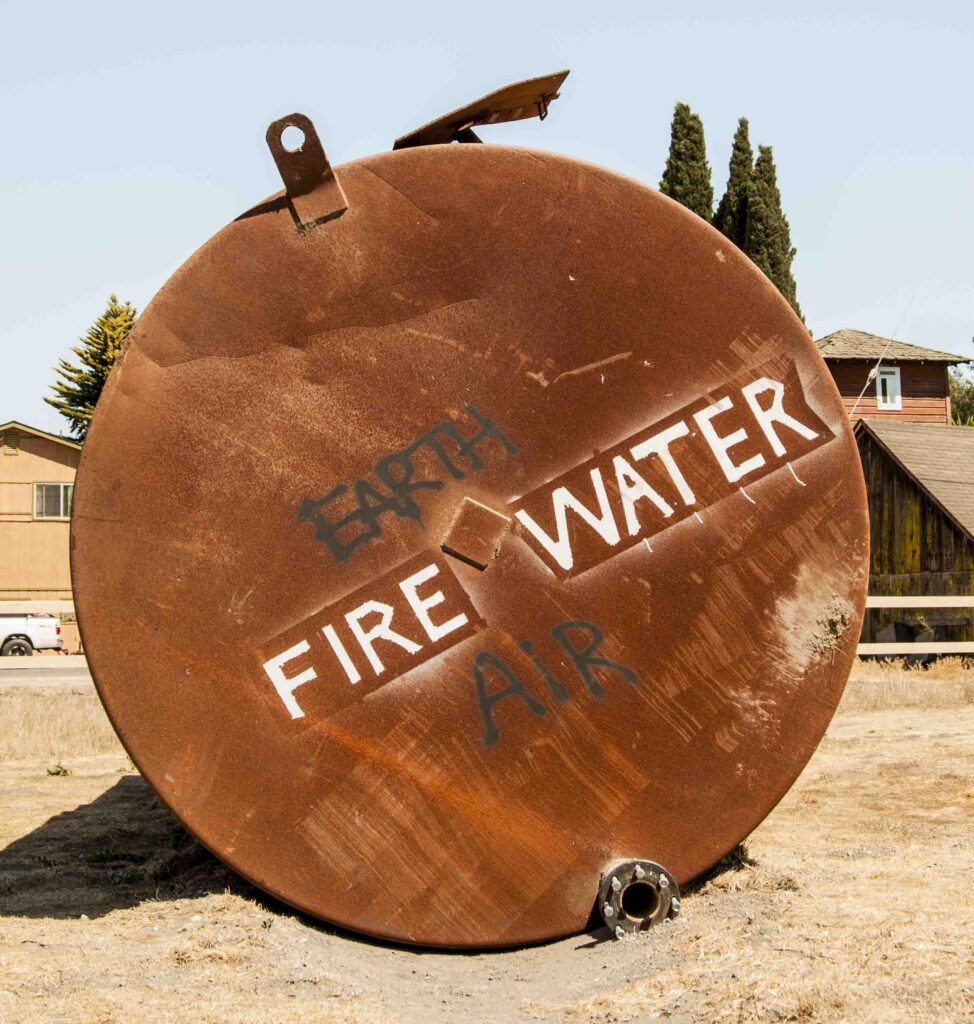
CONGRESSMAN CARBAJAL Our community has experienced firsthand the results of extreme droughts and wildfires. This past winter we faced devastation of the Thomas Fire, Holiday Fire and other fires – plus the destructive January debris-flow that tragically claimed lives of 23 of our neighbors. Many in our county are still recovering,
With recovery and rebuilding still underway, we still face year-round fire seasons. This summer the Central Coast already has seen too many wildfires, which thankfully our brave firefighters contained. It’s imperative that Congress take action to help reduce these threats – especially as this winter we saw the most destructive wildfire season on record in California. Fortunately, Congress passed wildfire funding in its 2018 Spending Bill, so wildfires now will be treated like any other natural disaster. This ends the disruptive practice known as “fire borrowing,” which limited fire prevention and mitigation efforts.
Traditionally, U.S. Forest Service had money in their budget for fire suppression. Once that budget was exceeded, it raided other budgets for prevention and mitigation efforts. Every year the Forest Service had limited resources for fire prevention and mitigation. Now there’s nearly $2.5 billion per year for the U.S. Forest Service and Department of the Interior to help with ongoing fuel management. The California National Guard now has 20 modernized Blackhawks, critical resources for many California firefighting agencies.
We all know the Central Coast is having more wildfires due to climate change, which also increases our ongoing drought conditions. These conditions affect our lives daily, not just during wildfires. To increase our security, we must conserve our water resources and invest in our nation’s water infrastructure.
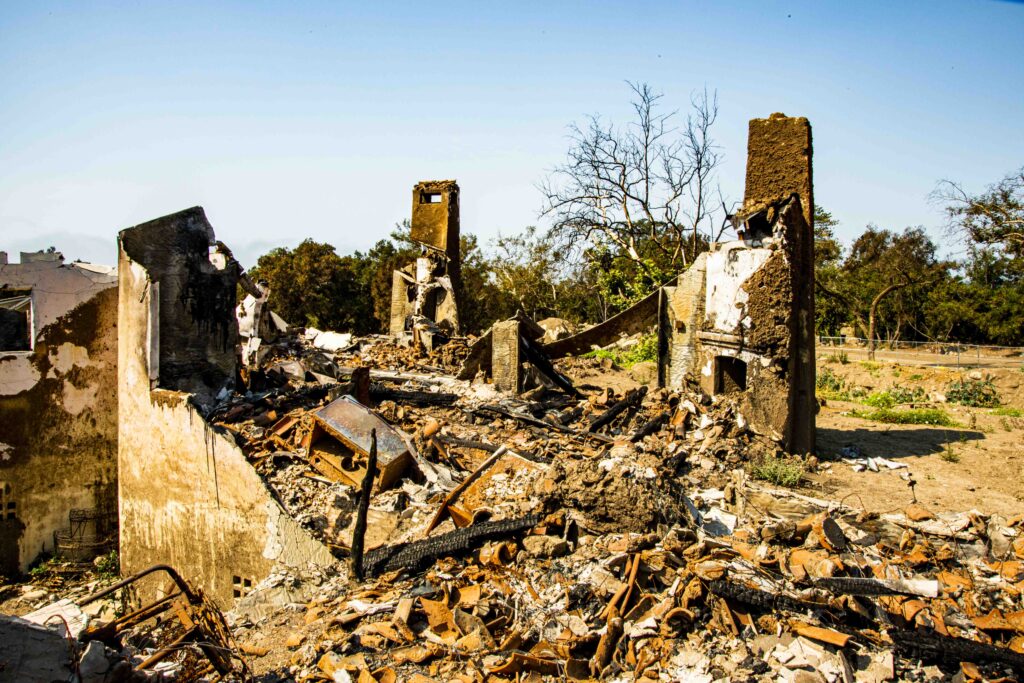
The Thomas Fire that burned parts of Santa Barbara County was more potent due to an unprecedented 200-year storm that claimed the lives of 23 neighbors and ruptured Montecito’s main waterline in Montecito. Many in our community lacked clean drinking water for days, warning us of the fragility of our infrastructure. We must seek ways to make our infrastructure more resilient, since extreme weather events are becoming more and more prevalent – as we saw with Hurricanes Harvey, Irma, and Maria and other storms across our nation.
However, sadly, no federal program helps communities strengthen the resilience of their water and wastewater infrastructure against such threats. That’s why I and a colleague from New York introduced Water Infrastructure Resiliency and Sustainability Act to establish a new $50 million federal grant program for the U.S. Environmental Protection Agency. It will help communities strengthen the resilience of their water and wastewater infrastructure against the threats of climate change. These funds will let each community determine the project or projects that work best for them, including water recycling, desalinization and other infrastructure. These funds can support relocating water and wastewater treatment facilities as sea levels rise. We need to be creative to address the effects of climate change.
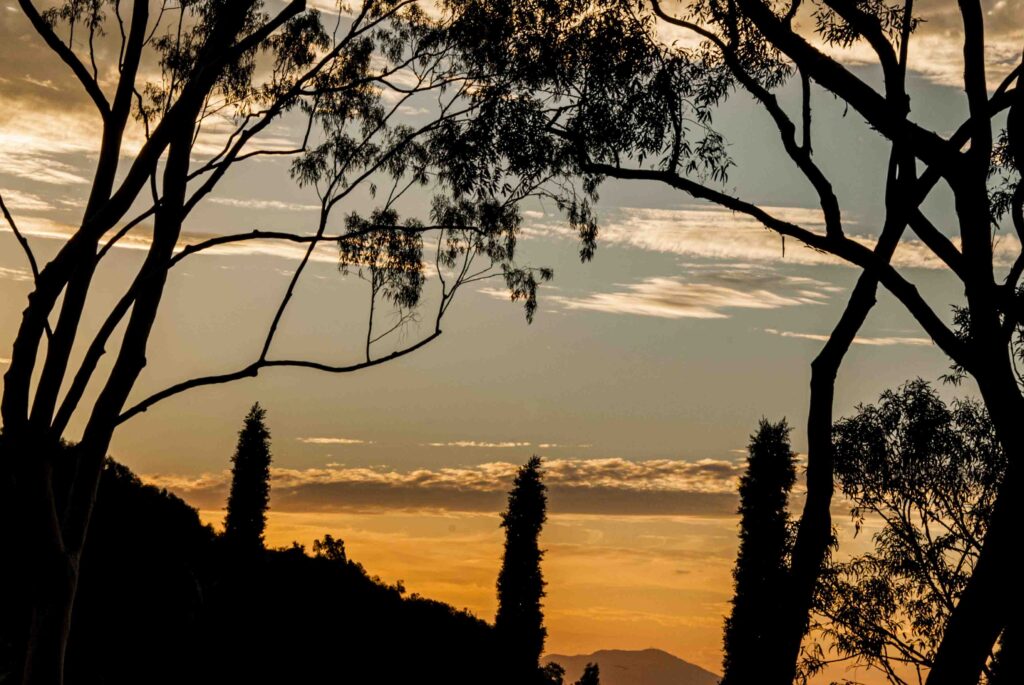
Questioners include Harold Hill, Carol Switzer Ann McCortie, Courtney Edelman, Dr. Chris Dicus, Dan Turner, Dora Drake, Carey Keough, Chief Peterson, Mark Maas. Those who didn’t give their names are marked as Q, for Question. Similarly, unidentified responses are labeled A, for Answer.
Q I’m a Santa Barbara resident. Can we increase our water storage by getting more rainwater into the ground? Our very heavy rains mean tremendous amounts of water run off to the ocean.
A There is a recently completed, draft of a stormwater capture plan that shows where you can capture stormwater that runs into the ocean and then send it into our groundwater basins.
Q Why aren’t there more controlled burns to mitigate the disastrous fires?
A Chaparrals play a big part of suppression and control of wildfires. We were a lot more proactive in prescribed burning in the ‘70s and ‘80s, as environmental restraints were a bit more flexible then. With urbanization of Southern California, much of the chaparral disappeared. Also, you can convert it to intense, but invasive grasses; but our hillsides won’t be held intact if they evolved to be held back from erosion by chaparral. Yet, we can be more proactive in the backcountry. It’ll always be difficult to do prescribed burns on Santa Barbara’s “front country” because of its topography and proximity to residential and airport areas.
HAROLD HILL How can we support Congressional representatives trying to get the water infrastructure resiliency?
CONGRESSMAN CARBAJAL Continue to let myself and other members of Congress know how important this is to the Central Coast by using letters and social media.
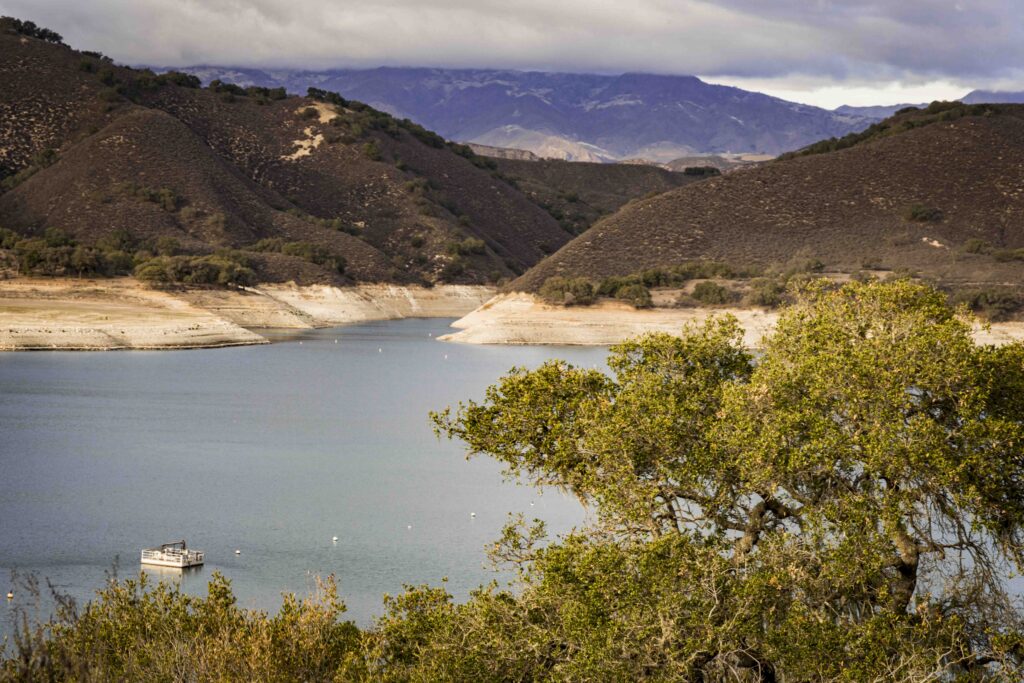
CAROL SWITZER What are the prospects for addressing the causes of climate disruption in Washington, D.C.? How can we help?
CONGRESSMAN CARBAJAL Well, it’s a challenging environment, yet heartening to see states like California and local communities pushing their legislatures, states and local communities to find climate solutions and public policies. For example, years back, California got a waiver from the federal government to require vehicles to adhere to higher emissions standards to protect both our health and our environment. The federal government traditionally establishes a baseline for all states to meet; but states should have the ability to have cleaner air for its residents. Those issues will wind up in court in some way or another. Meanwhile, continue to convey your sentiments to me and others. There is a group called the Climate Solutions Caucus. Seventy members of Congress, half Republican and half Democrat, are trying to find common ground to substantively address the climate change. It gives me hope that there are people on both sides willing to work together on these issues.
ANN MCCORTIE Where I live there are many dead trees and vegetation on both sides of the road. Since vegetation is fuel, what should I do if a fire were to come in that area?
A We’re trying to reduce fuel loading in those most vulnerable areas, especially those with structures. It’s a challenge, no question about it.
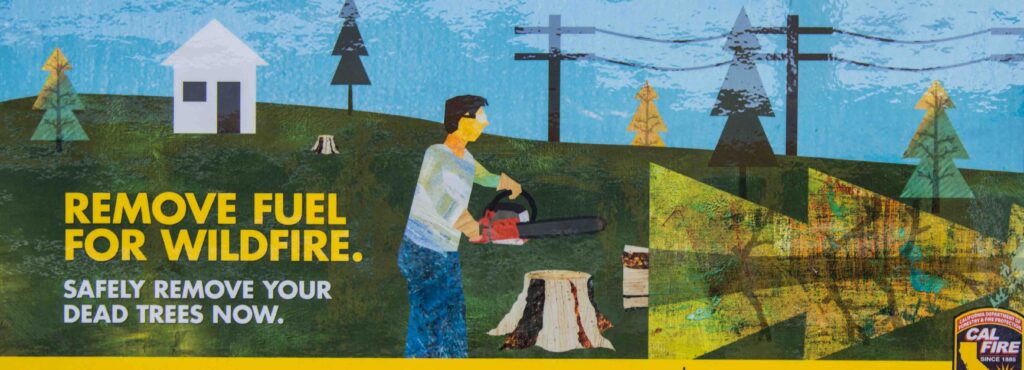
COURTNEY EDELMAN I came to Santa Barbara in 1977 as a 5th grader. That year’s Sycamore Canyon fire is still a strong memory. The community came together and donated things to one another, and it continues to do so. So, I feel very fortunate to live in such an amazing community, albeit challenged by wildfires and drought. So, thank you all. My concern now is we have many people here in the 70s, 80s and even older, and watching the Thomas Fire and now the Carr Fire is absolutely heart-wrenching to me. Those in the generation before me may not be checking Twitter, and they certainly can’t outrun a fire; so what might we think about putting in place to make ensure our most vulnerable community members are able to escape the flames, especially in a wind-driven fire situation?
A Helping the elderly vote is an ongoing problem. They can sign up for awareprepare.org, our mass notifications and our targeted cell phone notifications.
Q What about transportation when fire threatens?
CONGRESSMAN CARBAJAL During any major disaster, we can’t have all resources available immediately. But we must better connect with the elderly and frail so at least we know where they are.
CHRIS DICUS I’m president of the Association for Fire Ecology, an international scientific society across the U.S., Australia, Europe and Asia. My question is whether we can take a more holistic approach to fire management? Firefighters talk with firefighters. Scientists only talk with scientists. Engineers only talk with engineers. My Cal Poly colleagues think that we must find some solutions to get rid of this closed cycle.
A That’s a great point. Those connections should work better. We are all in this together continually – Forest Service, CALFIRE, state lands, local lands, and all firefighters in this area or across the state… We work together because we need information from each other, from science, and from stakeholders.
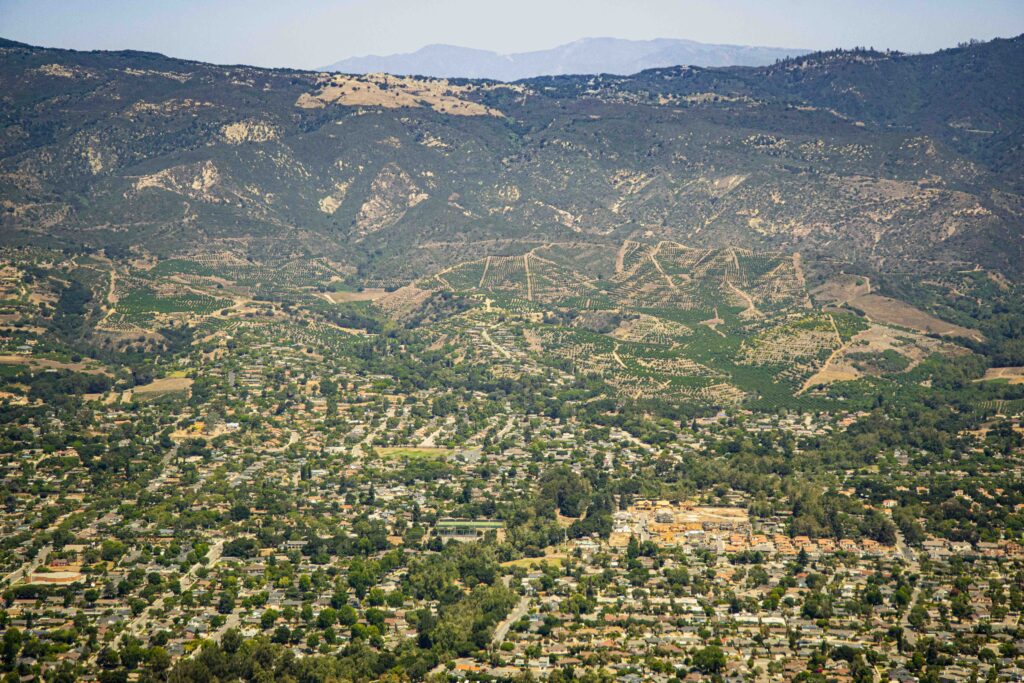
DAN TURNER I’m a retired CALFIRE chief for San Luis Obispo after 37 years of watching over 8,000 buildings burn. During the Sycamore Fire of 1977, I was a 5-year-old fire captain. It’s time for a quantum change. We have issues in fuel management, smoke management, public education preparedness, and such. But in the $2.5 billion for California fire management, only $2.5 is for fire research in the wild-human interface. We must change that. Fire safety studies in San Luis Obispo holistically includes community development, city and regional planning, aerospace, forestry fire management and fire protection engineering. We also need to address the wildland-urban interface problem here. Can the Department of Homeland Security create a center of excellence – like we have for other national disasters in the U.S.- for wildland-urban interface fires in California, the West, the Southeast and Florida. The worst wildland-urban interface fire in U.S. history was in Wisconsin. This is a national problem. The worst fires in our history are occurring right now.
A We must change that. We are looking at how legislation or funding for a fire research center or pilot project to find the science could help communities implement best practices.
DORA DRAKE I grew down the hill here near and remember all our fires: the Romero Fire, the Sycamore Fire…. But those fires were five, ten, 15 years apart. It’s terrifying that now we seem to have a large wildfire every year – or several of them. My residence has been under “mandatory departure” about 4 times in the last 10 years; 3 times in the last 5 years; and 2 times for the last few summers. An L. A. Times article said: Officials urge the public to be vigilant when cooking or enjoying campfires at campgrounds at day-use sites. The White Fire could have been avoided if this person or persons paid closer attention to their cooking fire. Campers aren’t used to the environment up there. They often don’t know how the forest works. Why do we allow any fires at all? It seems it takes months or weeks to raise fire-level restrictions. Why isn’t that being fixed?
CONGRESSMAN CARBAJA This is an ongoing effort of our fire agencies and the U.S. Forest Service.
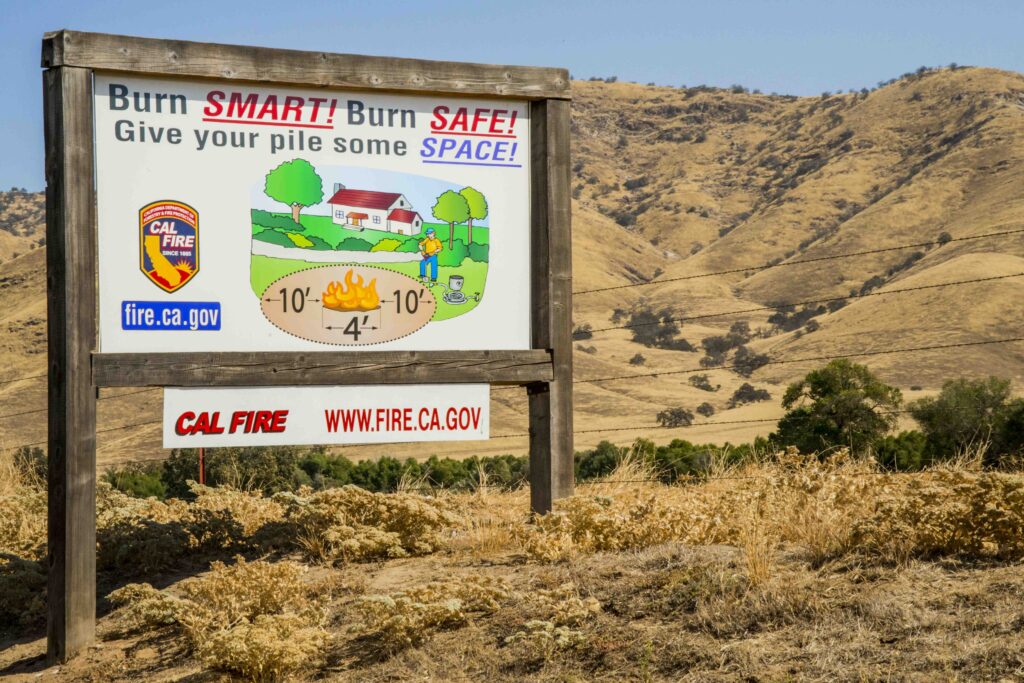
CAREY KEOUGH Southern California Edison plans to cut power during fire disasters, but it sounds arbitrary. What oversight is there on these public utilities?
MALE Discussions are ongoing on whether to cut the power for a predicted, particularly strong wind. Their 50-60 m.p.h. wind thresholds are extremely high; and since such winds are quite rare, cuts won’t happen very often. We notify everyone prior to those planned outages. Obviously, we have many concerns about folks that rely on power for medical issues. We’re concerned about many things and will voice those concerns to Southern California Edison in August at their community meeting.
Q Are the Forest Service and the county working together on safer programs for long-term safety in fires, floods and debris flow in the county?
MALE The Burn Area Emergency Repair/BAER (teams that come directly after a fire) used to do quite a bit of seeding on our slopes. But, that was detrimental, rather than effective.
CHIEF PETERSON Over 31 years, I’ve never seen collaboration better than it is right now. That bodes well for future recovery from the floods. CALFIRE recovery teams and federal recovery teams work together and are well-aware of each other’s recommendations.
MARK MAAS I’m a relatively new scientist at UCSB, studying vegetation recovery and geological issues. In fighting fires, have you seen any vegetation features work as fire breaks that we might use for land-use planning and management as a “front country” buffer or field break? For instance, avocado orchards act as big “heat sinks” and take a lot of embers. Since they’re typically very moist, we might string avocado orchards together – or orange fields or vineyards. Agriculture has been proven to be a valuable buffer against an oncoming fire front. Public/private agricultural partnerships, parkland or anything without fuel should be explored.
Q How do you determine where the next fire could be?
MALE Using Geographical Information System/GIS, we can use their visual data on the history of ignition, while also using our history to pre-plan. In the last 15 years, the “front country” and backcountry don’t have too many areas that have burned. Western Gaviota hasn’t burned since its 1955 fire. Thus, it’s likely the next large fire will be in the front country of Santa Barbara.
DAN I represent International Emergency Services. We use aviation to fight fires. We have several aircraft, and a helicopter now up north and hope to get the Russian Beriev BE-200 Super Scooper. We love the Canadians, but they’re pipsqueaks compared to the 3,000-gallon Scooper.
Our program’s aerial services would complement ground forces from state and county aviation units. They could work in unison to get to the fires more quickly and effectively than state or county agencies. We could strategically station mobile platforms where fire is statistically likely – as in the Santa Barbara area. We’d use our water sources or an independent tender. We’d be on-call and up in 10 minutes to hit a fire hard and possibly prevent a small burn turning into something big. What are your thoughts on this?
A That requires more exploration, but anything that brings in more aircraft is worth a look.
CONGRESSMAN CARBAJAL From a federal standpoint, I’ve heard about the Russian Super Scooper. My office approached Homeland Security and other agencies but found no federal program seriously exploring that. But as Chief Peterson said, we should always look at any resource that’s efficient and cost effective. Nothing should be off the table.
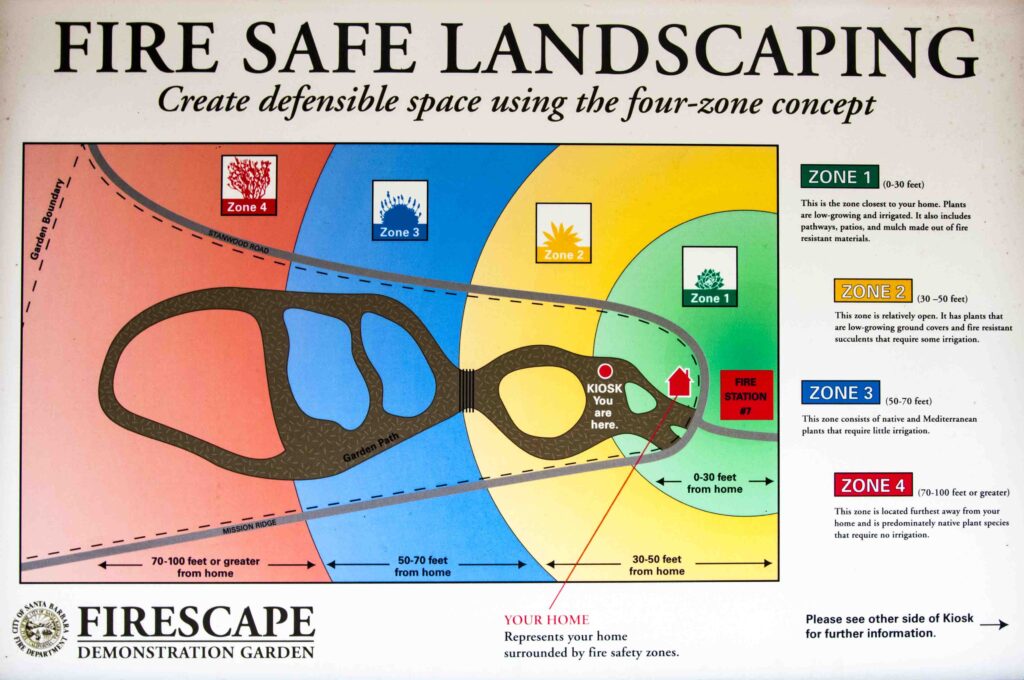
Posted by NWNL on December 17, 2023.
Transcription edited and condensed for clarity by Alison M. Jones.
All images © Alison M. Jones, unless otherwise noted. All rights reserved.
